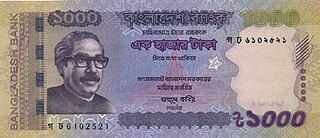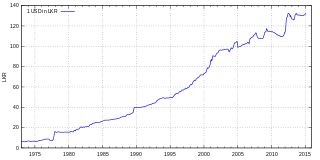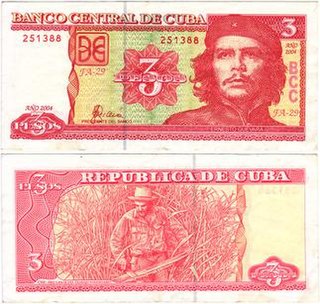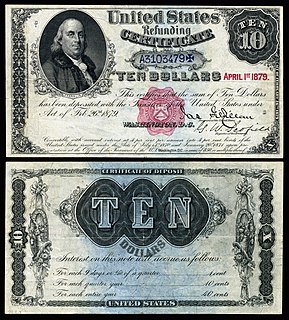Banknotes were issued in New Guinea in late 1914 after Australian forces took over German New Guinea.

A banknote is a type of negotiable promissory note, made by a bank, payable to the bearer on demand. Banknotes were originally issued by commercial banks, which were legally required to redeem the notes for legal tender when presented to the chief cashier of the originating bank. These commercial banknotes only traded at face value in the market served by the issuing bank. Commercial banknotes have primarily been replaced by national banknotes issued by central banks.

New Guinea is a large island separated by a shallow sea from the rest of the Australian continent. It is the world's second-largest, after Greenland, covering a land area of 785,753 km2 (303,381 sq mi), and the largest wholly or partly within the Southern Hemisphere and Oceania.

Australia, officially the Commonwealth of Australia, is a sovereign country comprising the mainland of the Australian continent, the island of Tasmania and numerous smaller islands. It is the largest country in Oceania and the world's sixth-largest country by total area. The neighbouring countries are Papua New Guinea, Indonesia and East Timor to the north; the Solomon Islands and Vanuatu to the north-east; and New Zealand to the south-east. The population of 25 million is highly urbanised and heavily concentrated on the eastern seaboard. Australia's capital is Canberra, and its largest city is Sydney. The country's other major metropolitan areas are Melbourne, Brisbane, Perth and Adelaide.
These extremely rare notes are denominated in New Guinean marks, as opposed to German New Guinean marks. The New Guinean mark was created as a way of driving the German New Guinean mark out of circulation, and to function as a temporary currency until the Australian pound was introduced.

The Mark was the currency of the colony of German New Guinea between 1884 and 1911. It was equal to the German Mark, which was also legal tender in the colony.

The Australian pound was the currency of Australia from 1910 until 14 February 1966, when it was replaced by the Australian dollar. As with other £sd currencies, it was subdivided into 20 shillings, each of 12 pence.
The notes are inscribed 'TREASURY NOTE', '(x) MARKS', 'Payable in coin at the Treasury, Rabaul. Dated at Rabaul this ...day of...191...', 'For and on behalf of the Treasury'. The denomination is also expressed in figures in two boxes at the top of the notes.

Rabaul is a township in East New Britain province, on the island of New Britain, in the country of Papua New Guinea. It lies about 60 kilometres to the east of the island of New Guinea. Rabaul was the provincial capital and most important settlement in the province until it was destroyed in 1994 by falling ash of a volcanic eruption in its harbor.
The notes are extremely rare. They are listed in the Standard Catalog of World Paper Money quite wrongly under 'German New Guinea'. Only 29 notes are known to have survived, although reprints of all have been made. . [1] The 100 mark note may be unique. [2]
The Standard Catalog of World Paper Money is a well-known catalogue of banknotes that is published by Krause Publications in three volumes. These catalogues are commonly known in the numismatic trade as the Pick catalogues, as the numbering system was originally compiled by Albert Pick, but are also referred to as "Krause" or "SCWPM." Since the mid-1980s the titles have been owned by Krause Publications, and from 1994–2016 were under the editorship of George S. Cuhaj, and subsequently by Tracy L. Schmidt.
A primitive 20 Mark note printed with boot polish is also reputed to have existed which was used for paying the wages of the German Voluntary Brigade.














